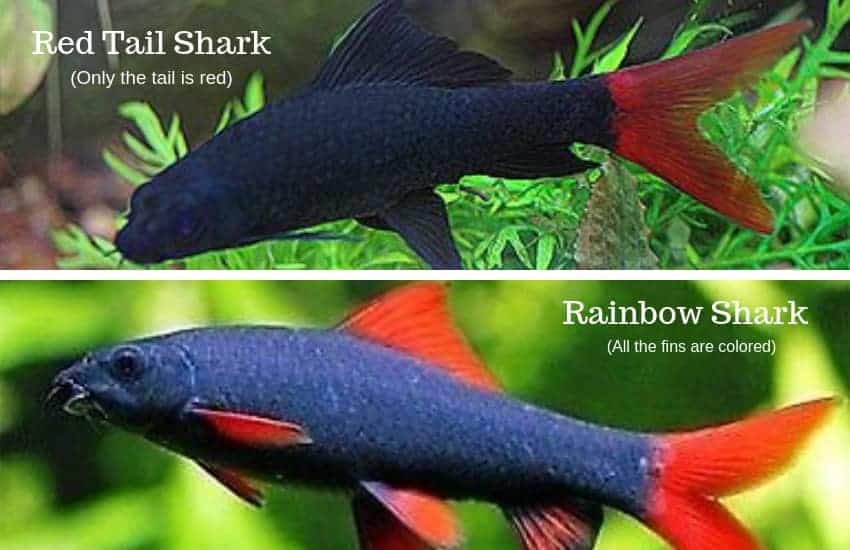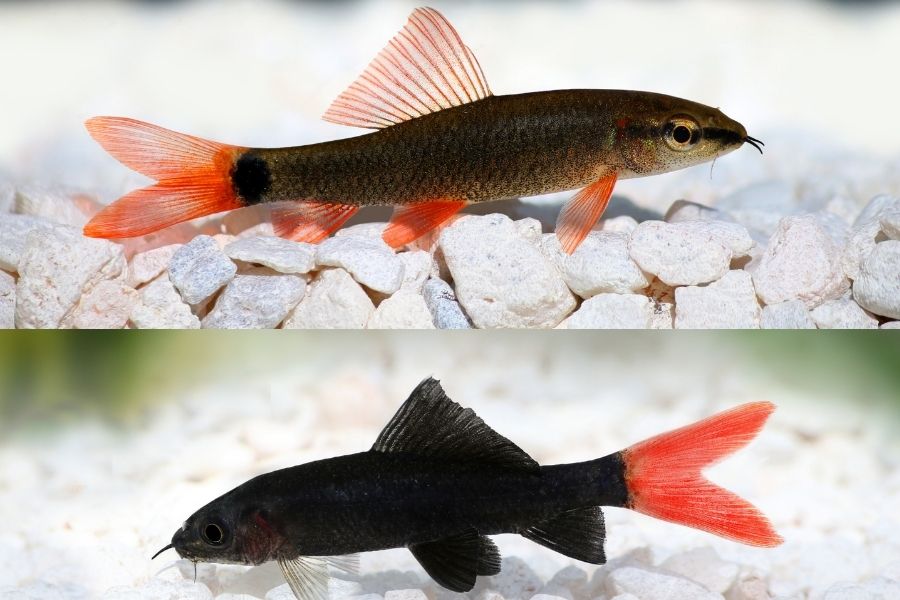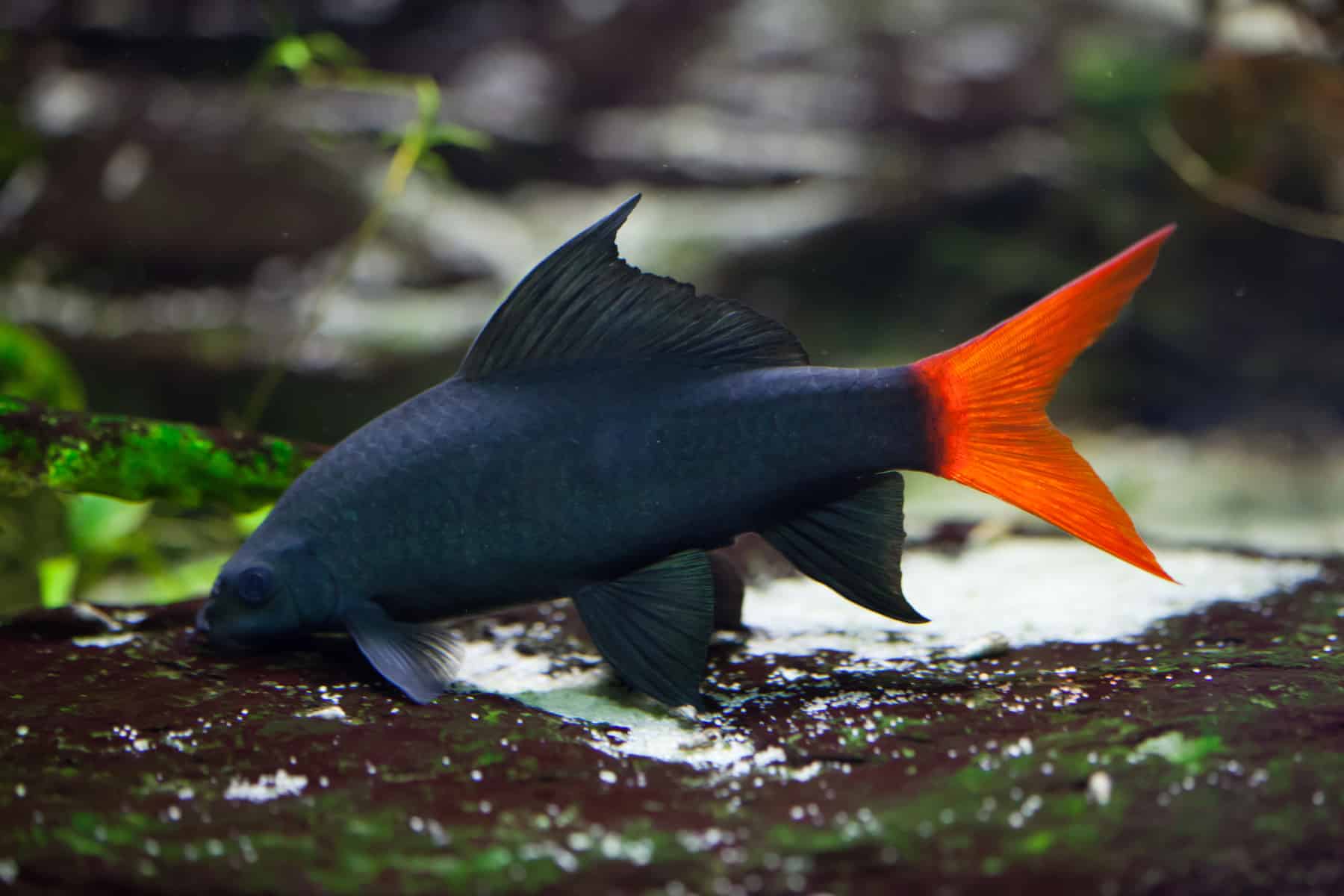Rainbow Shark Vs Red Tail Shark
Do you want to add a colorful and active fish to your aquarium? Rainbow Shark and Red Tail Shark are two popular tropical fish that can make a great addition to your collection. But which one is right for you? Let's explore the differences and similarities between these two fascinating species in our Rainbow Shark vs Red Tail Shark guide.
The pain points related to rainbow shark vs red tail shark
If you are confused about choosing between Rainbow Shark and Red Tail Shark, you are not alone. Many aquarists find it challenging to decide which one is a better fit for their aquarium. These fish have similar features and requirements, which can make it difficult to choose between them. Moreover, both species have some aggressive tendencies that can cause problems with other fish in the tank.
The target of rainbow shark vs red tail shark
Before we dive into the differences and similarities let's look at the targets of these fish. Rainbow Sharks, scientifically known as Epalzeorhynchos frenatum, are solitary fish that originate from Thailand. They are named after their vibrant colors that range from orange, pink, and red to black. Rainbow sharks can grow up to 6 inches and have a lifespan of 5-8 years in captivity. Red Tail Sharks, on the other hand, belong to the Epalzeorhynchos bicolor species and are native to Southeast Asia. They have a bright red tail that contrasts with their black body and can grow up to 6 inches long with a lifespan of 8-10 years.
Summary of the article's main points
Both Rainbow Shark and Red Tail Shark have their unique features and requirements, and it is essential to consider these factors when choosing a fish for your aquarium. In this guide, we discussed the targets of these fish, their similarities and differences, their care requirements, and compatibility with other fish species.
Rainbow Shark vs Red Tail Shark: Targets and Characteristics
As mentioned earlier, Rainbow Shark and Red Tail Shark belong to two different species and have unique characteristics. In terms of target, Rainbow Sharks are typically peaceful with other fish of similar size but can be territorial and aggressive with their own kind. In contrast, Red Tail Sharks are more aggressive and tend to chase and nip other fish. Both species prefer aquariums with plenty of hiding spots and rock caves.
Personally, I have kept both Rainbow Shark and Red Tail Shark in my aquarium and noticed that while the Rainbow Shark was more active and playful, Red Tail Shark was more aggressive and territorial. They both required similar water parameters, but Rainbow Shark was a bit more tolerant of water fluctuations.

If you want to keep one of these fish, make sure your tank is large enough to accommodate their size, and provide enough hiding places to satisfy their territorial behavior. It is also essential to keep their water clean and well-filtered with pH levels between 6.5 and 7.5.
Differences in Appearance
One of the most striking differences between Rainbow Shark and Red Tail Shark is their appearance. While Rainbow Shark has a black body with bright pink or red fins and tail, Red Tail Shark has a black body with a deep red tail. Rainbow Shark also has a more streamlined body shape, while Red Tail Shark has a more robust body.
Both species look stunning in a well-planted aquarium with a dark substrate that brings out their vibrant colors.

Their Care Requirements
Rainbow Shark and Red Tail Shark have similar care requirements. They prefer to live in heated aquariums with a temperature range of 72-80°F and soft to moderately hard water. Both species are omnivores and require a well-balanced diet of live, frozen, and dry food. They both enjoy frozen bloodworms, brine shrimp, and spirulina flakes.
When it comes to tank size, we recommend at least a 30-gallon tank for a single fish, but a larger fish tank is better for multiple fish or community tanks.

Compatibility with other fish
Since Rainbow Shark and Red Tail Shark are known to be territorial and aggressive, they need to be housed with fishes of a similar size and aggression level. It is important not to keep multiple Rainbow Sharks or Red Tail Sharks in the same aquarium as they may fight each other, which can lead to severe injuries or death. They can be housed with peaceful tank mates such as Corydoras and Gouramis.
Question and Answer about Rainbow Shark vs Red Tail Shark
Q: How big can Rainbow Sharks and Red Tail Sharks get?
A: Both species can grow up to 6 inches, but there are instances where Rainbow Sharks have been known to grow up to 8 inches.
Q: Do Rainbow Sharks and Red Tail Sharks require a specific type of substrate?
A: These fish prefer a dark substrate, but they can adapt to a variety of substrates, including sand and gravel.
Q: Can Rainbow Sharks and Red Tail Sharks coexist together?
A: No, these two species cannot coexist in the same aquarium as they may fight each other.
Q: Can Rainbow Sharks and Red Tail Sharks be housed with other fish?
A: Yes, they can be housed with peaceful fish species of similar size and aggression level. Gouramis, Corydoras, and other tropical fish can be suitable tank mates. It is vital to monitor their behavior and separate them if necessary.
Conclusion of Rainbow Shark vs Red Tail Shark
In conclusion, both Rainbow Shark and Red Tail Shark can make a fascinating addition to your tropical aquarium. These fish have unique characteristics that set them apart from other species, and they require special attention to their territorial and aggressive behavior. By following their care requirements and providing them with a suitable environment, you can enjoy their vibrant colors and playful personalities.
Gallery
Differences And Similarities Between Rainbow And Red Tail Shark

Photo Credit by: bing.com / rainbow redtail
Rainbow Shark VS Red Tail Sharkdifference Between Rainbow Shark And

Photo Credit by: bing.com /
Small Red Tropical Fish For Sale Online

Photo Credit by: bing.com /
Rainbow Shark Vs Red Tail Shark! Which One’s Right For You?

Photo Credit by: bing.com /
Red Tail Shark (Epalzeorhynchos Bicolor) Care Sheet - Aquariadise

Photo Credit by: bing.com / tailed redtail bicolor epalzeorhynchos betta labeo reef aquariadise ultimate wildlife mates gallons bettasource abitoffishing
